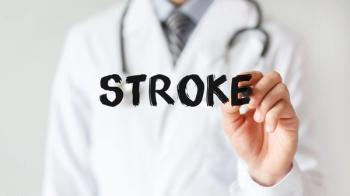
Biomarkers for Concussion: Current Insights and Future Directions
Key Takeaways
- Biochemical biomarkers like S100B, GFAP, and UCH-L1 are promising for concussion diagnosis but face specificity challenges.
- Neuroimaging techniques, including DTI and fMRI, reveal structural and functional brain changes post-concussion, aiding in severity assessment.
Because diagnosis and management of concussions remain challenging, reliable biomarkers can improve effective intervention.
Concussions represent a significant health concern due to their prevalence and potential for long-term cognitive, emotional, and physical consequences. Despite advancements in neuroimaging and clinical assessments, the diagnosis and management of
Biochemical Biomarkers
Biochemical biomarkers are among the most promising tools for identifying and monitoring concussions. These biomarkers are typically proteins or molecules released into the bloodstream or cerebrospinal fluid (CSF) following neuronal or glial damage. One well-studied biomarker is the protein S100B, a calcium-binding protein predominantly expressed in astrocytes. Elevated levels of S100B in serum have been correlated with blood-brain barrier disruption and neuronal injury.1 However, its specificity is limited, as S100B can also be elevated in extracranial injuries.1
Another key biomarker is glial fibrillary acidic protein (GFAP), an astrocyte-specific intermediate filament protein. GFAP has shown high sensitivity and specificity in distinguishing concussed individuals from controls and is now used in some clinical settings.2 Ubiquitin carboxy-terminal hydrolase L1 (UCH-L1) is a marker of damage to the neuronal cell body. UCH-L1 has helped to detect mild to moderate traumatic brain injury, with elevated levels correlating with axonal injury and neuronal cell death.3
Tau protein and neurofilament light (NFL) are other emerging biomarkers that are gaining recognition for their roles in axonal injury and neurodegeneration. Tau protein, associated with the stability of axons, is released when an axon is damaged, and has been particularly valuable in assessing repetitive head trauma and potential links to chronic traumatic encephalopathy.4 NFL, a structural component of axons, shows promise as a sensitive marker for detecting the severity of injury to the neuron and predicting recovery trajectories. Recent studies highlight its potential for monitoring ongoing neurodegeneration following mTBI.5
Neuroimaging Biomarkers
Advanced neuroimaging techniques have provided insights into structural and functional changes following concussions. Diffusion tensor imaging (DTI) is particularly useful for detecting white matter damage, a hallmark of mTBI. DTI metrics, such as fractional anisotropy (FA) and mean diffusivity (MD), have been correlated with clinical outcomes, offering a potential biomarker for injury severity and recovery.6
Functional MRI (fMRI) has also been employed to assess alterations in brain activity. Resting-state fMRI, which examines functional connectivity patterns, has revealed disruptions in key networks, such as the default mode network (DMN), in individuals with concussion.7 Similarly, magnetic resonance spectroscopy (MRS) enables the quantification of brain metabolites like N-acety laspartate (NAA), a marker of neuronal integrity, which is often reduced following mTBI.8
Physiological Biomarkers
Beyond biochemical and imaging markers, physiological changes offer additional diagnostic and prognostic value. Electroencephalography (EEG) provides a noninvasive method to detect abnormal electrical activity in the brain. Changes in EEG have been observed in patients with a concussion, reflecting disruptions in neural function.9 Additionally, eye-tracking metrics, which assess oculomotor function, have also gained traction as objective measures of concussion-related impairments.10
Challenges and Limitations
Despite promising developments, the clinical translation of concussion biomarkers faces several challenges. Many biomarkers lack specificity, as their levels can be influenced by extracranial injuries or systemic factors. Variability in timing and severity of injury complicates the standardization of biomarker thresholds. Most studies to date are limited by small sample sizes and heterogeneous study populations, reducing the generalizability of findings.
Future Directions
The future of concussion biomarker research lies in multi-modal approaches that integrate biochemical, imaging, and physiological markers. Combining these modalities can enhance diagnostic accuracy and provide a comprehensive understanding of injury mechanisms. Advances in high-throughput technologies, such as proteomics and metabolomics, may identify novel biomarkers with higher specificity and sensitivity.11 Longitudinal studies are needed to track biomarker dynamics over time, aiding in the prediction of long-term outcomes and recovery trajectories.
Artificial intelligence (AI) and machine learning algorithms hold promise for analyzing complex biomarker datasets and identifying patterns predictive of concussion.12 These technologies can facilitate the development of individualized diagnostic tools and treatment strategies, paving the way for precision medicine in concussion care; however, ethical considerations remain an issue.12
Concluding Thoughts
Biomarkers for concussion represent a critical area of research with the potential to revolutionize the diagnosis and management of mTBI. While significant progress has been made in identifying biochemical, imaging, and physiological markers, challenges remain in their clinical application. Future research focusing on multi-modal approaches, novel biomarker discovery, and the integration of AI-driven analytics may help in overcome existing limitations. By addressing challenges, biomarkers can play a pivotal role in improving outcomes for individuals affected by concussion.
Dr Howell is a senior neuroscientist and Director of Research Integration at the Centre for Neuro Skills. She is a specialist in brain injury rehabilitation, neurodegenerative disease, and clinical research.
References
1. Michetti F, Clementi ME, Di Liddo R, et al.
2. Papa L, Zonfrillo MR, Welch RD, et al.
3. Hossain I, Marklund N, Czeiter E, et al.
4. Katsumoto A, Takeuchi H, Tanaka F.
5. Graham NSN, Zimmerman KA, Moro F, et al.
6. Palcios EM, Yuh EL, Mac Donald CL, et al.
7. D’Souza MM, Kumar M, Choudhary A, et al.
8. Joyce JM, La PL, Walker R, Harris AD.
9. Liang B, Alosco, ML, Armananzas R, et al.
10. McDonald MA, Holdsworth SJ, Danesh-Meyer H.
11. Cui M, Cheng C, Zhang L.
12. Beard K, Pennington AM, Gauff AK, et al.
Newsletter
Receive trusted psychiatric news, expert analysis, and clinical insights — subscribe today to support your practice and your patients.














